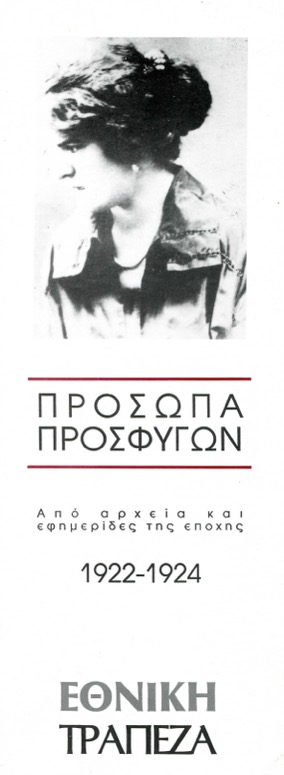Memory and the faces of refugees
City
Migration Period
Category
Full Description
One of the first organised endeavours to promote the history and culture of Asia Minor refugees was Melpo Merlie’s collection of folklore material from Asia Minor during the 1930s. She resumed her efforts after the war with the establishment of the Centre for Asia Minor Studies in 1948 and the collection of oral refugee testimonies. However, even as early as the 1920s, refugee press and specialised journals, such as the Pontus Archive (1929) and the Asia Minor Chronicles (1936), were circulating, publishing research on the history and folklore of Asia Minor. Around that time, many refugee associations also published commemorative editions on the lost homelands, such as the volume entitled ‘Echoes from Mudania and the surrounding area’, a rich, illustrated publication offering a variety of materials, published by the Mudania Refugee Association in Thessaloniki in 1931.
Gradually, these practices created refugee memory and partially shaped refugee identity. This identity had not existed before; it was constituted by experiencing the catastrophe and the state of being a refugee, experiences which were by no means uniform. Thus, the memory generated remained fluid, multidimensional and malleable through the course of decades.
After the Second World War, when the refugees had become integrated into Greek society, new unions and associations appeared, aiming to establish connections between second- and third- generation refugees and their ancestors’ homelands through numerous events, with a focus on music and dance. Around that time, particularly after the 1960s, refugee identity and Asia Minor culture were integrated into Greek popular culture mainly through music and literature.
During the 1980s, refugee identity became intensely politicised, a development reflected by the demand on behalf of refugee associations – mostly Pontian – that the refugee experience should be recognized as genocide. This effort culminated in the Greek Parliament designating two days as Genocide Memorial Days: 19th of May for the Greeks of Pontus (in 1994) and 14th of September for the Greeks of Asia Minor (in 1998).
Historiography was another way in which refugee memory was highlighted and managed, with a publication boom in relevant historical books and journals, especially during the 1990s and 2000s. Many of these publications were mass produced and distributed by the daily press. The proliferation of exhibitions in cultural institutions and historical and folk art museums, especially after the 1990s, also contributed to the promotion of refugee memory.
This is the brochure accompanying an important exhibition held in Thessaloniki in 1992 on the 70-year anniversary of the Asia Minor Catastrophe. The title of the exhibition was ‘Faces of Refugees. From archives and newspapers of the era. 1922-1924’. It was organised in 1992 by the Thessaloniki Cultural Centre of the National Bank of Greece and was curated by Evanghelos A. Hekimoglou. Using material from archives and newspapers, the exhibition was one of the first such events to focus on refugee settlement in Thessaloniki, foregrounding through photography the faces of the refugees, who finally stopped being anonymous populations, if only for a little while.
Bibliography
Charis Exertzoglou, ‘The history of refugee memory’, in Antonis Liakos (ed.) 1922 and the refugees. A new perspective, Nefeli, Athens 2011, pp. 191-201.
Exhibition ‘Faces of Refugees. From archives and newspapers of the era. 1922-1924’, First presentation: National Bank Exhibitor Stand at the 57th Thessaloniki International Fair, September 12-21, 1992. First and Second Presentation: Thessaloniki Cultural Centre of the National Bank of Greece, 108 Vas. Olgas Street, October 1992. Organised by the Thessaloniki Cultural Centre of the National Bank of Greece. Design, overall curation, texts by Evanghelos A. Hekimoglou, with the contribution of Voula Maraggidi. Research and editing: Chaidi Keramopoulou. Aesthetic design: Elli Georgila. Collaborator for the second presentation: Giorgos Anastasiadis.



